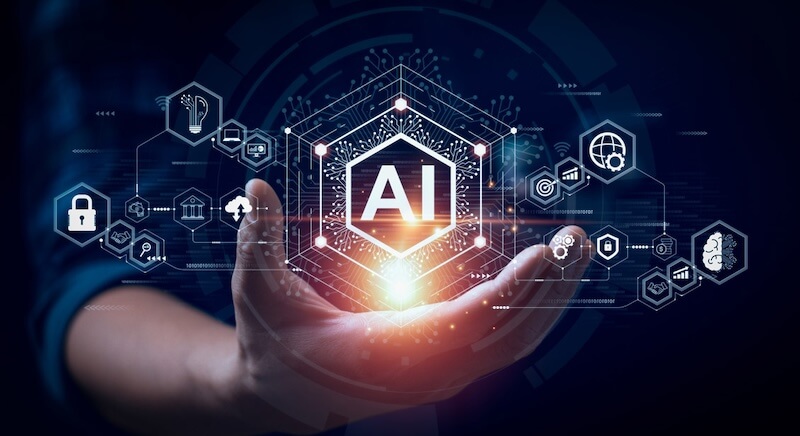Agentic AI, also known as autonomous AI, is rapidly evolving from a futuristic concept to a tangible reality, promising to revolutionize industries and reshape how we interact with technology. These systems, capable of independent decision-making, long-term goal pursuit, and iterative problem-solving, are being touted as the next major leap in artificial intelligence. But are these autonomous systems truly delivering on their revolutionary promise and potential, or are we still in the early stages of hype?
Agentic AI distinguishes itself from traditional and even generative AI through its capacity for autonomous action. Unlike reactive systems that respond to specific prompts or pre-programmed instructions, agentic AI can initiate actions based on environmental conditions, schedule tasks, and pursue long-term objectives without constant human input. This proactive nature allows these systems to understand complex issues, reason through scenarios, make independent choices, and execute tasks end-to-end, all while learning and refining their abilities. Gartner predicts that agentic AI will autonomously make 15% of day-to-day work decisions by 2028, a significant jump from 0% in 2024. Moreover, by 2029, Gartner anticipates that agentic AI will resolve 80% of common customer service issues without human intervention.
The potential applications of agentic AI span across numerous sectors. In customer service, agentic AI can access live shipping data, determine the cause of delays, offer solutions like expedited replacements or refunds, and update records independently. Application development and IT operations are also being transformed, with AI agents assisting in code generation, software testing, and real-time suggestions for better coding. In cybersecurity, agentic AI can analyze application code, network traffic, user behavior, and system logs to detect anomalies and bolster security postures, outperforming traditional security tools.
Healthcare is another area ripe for agentic AI disruption. These systems can continuously monitor patients with chronic conditions via wearable devices, alerting patients and providers upon detecting potential risks, scheduling follow-ups, or even adjusting medication within approved parameters. Drug discovery and development can be accelerated through ADME (Absorption, Distribution, Metabolism, Excretion) profiling, predicting drug behavior in the body early in the development process. Manufacturing is also adopting AI to optimize production schedules and predict machinery failures for proactive maintenance. In financial services, AI agents can analyze market data, assess risk, make investment decisions, and adapt strategies based on market conditions and individual financial goals, democratizing access to personalized wealth management. Government agencies can also leverage agentic AI to handle citizen inquiries, process applications, and provide personalized information on government services.
However, the path to realizing the full potential of agentic AI is not without its challenges. One significant concern is the lack of true autonomy. Generative AI models, which often underpin agentic AI systems, rely heavily on training data and are bound by the biases and limitations of that data. This can lead to poor decision-making, as these systems may struggle to reason effectively or adapt to dynamic environments. Moreover, the stochastic nature of generative AI introduces risks, such as the creation of misleading or harmful content, raising ethical and security concerns.
Scalability and control also pose challenges. Generative models are computationally expensive and difficult to control, and fine-tuning them for specific agentic AI applications can lead to unpredictable outcomes. Explainability and transparency are crucial for building trust and ensuring accountability. AI agents must be able to justify their actions in understandable terms, requiring deeper contextual awareness and efficient learning mechanisms. Ensuring safety and reliability in complex, unstructured environments is also non-negotiable.
Other challenges include managing technical complexities, ensuring data quality and governance, addressing security and privacy concerns, allocating resources effectively, and facilitating employee adoption. Integrating agentic AI with existing systems can be difficult due to outdated APIs and conflicting data formats. Scalability limitations can also hinder deployment, as systems must adapt to growing user demands without compromising performance or security.
Despite these challenges, agentic AI holds immense promise. Advances in large language models, enhanced memory architectures, reinforcement learning, and tool use are paving the way for greater autonomy and problem-solving abilities. The integration of agentic AI with IoT and cloud services is also unlocking new possibilities, enabling real-time data analysis and complex operations. As organizations navigate implementation challenges and address ethical and regulatory considerations, the potential for competitive advantage is significant. The future of autonomous systems will likely be characterized by greater intelligence, improved collaboration with humans, enhanced security, and increased sustainability.
Ultimately, whether agentic AI truly delivers on its revolutionary promise hinges on addressing the existing limitations and challenges. While early-stage applications are promising, widespread adoption requires careful consideration of ethical implications, security vulnerabilities, and the need for human oversight. By focusing on transparency, explainability, and responsible development, we can harness the power of agentic AI to unlock new efficiencies, products, and business models, while mitigating potential harm and ensuring alignment with human values and societal well-being.

















